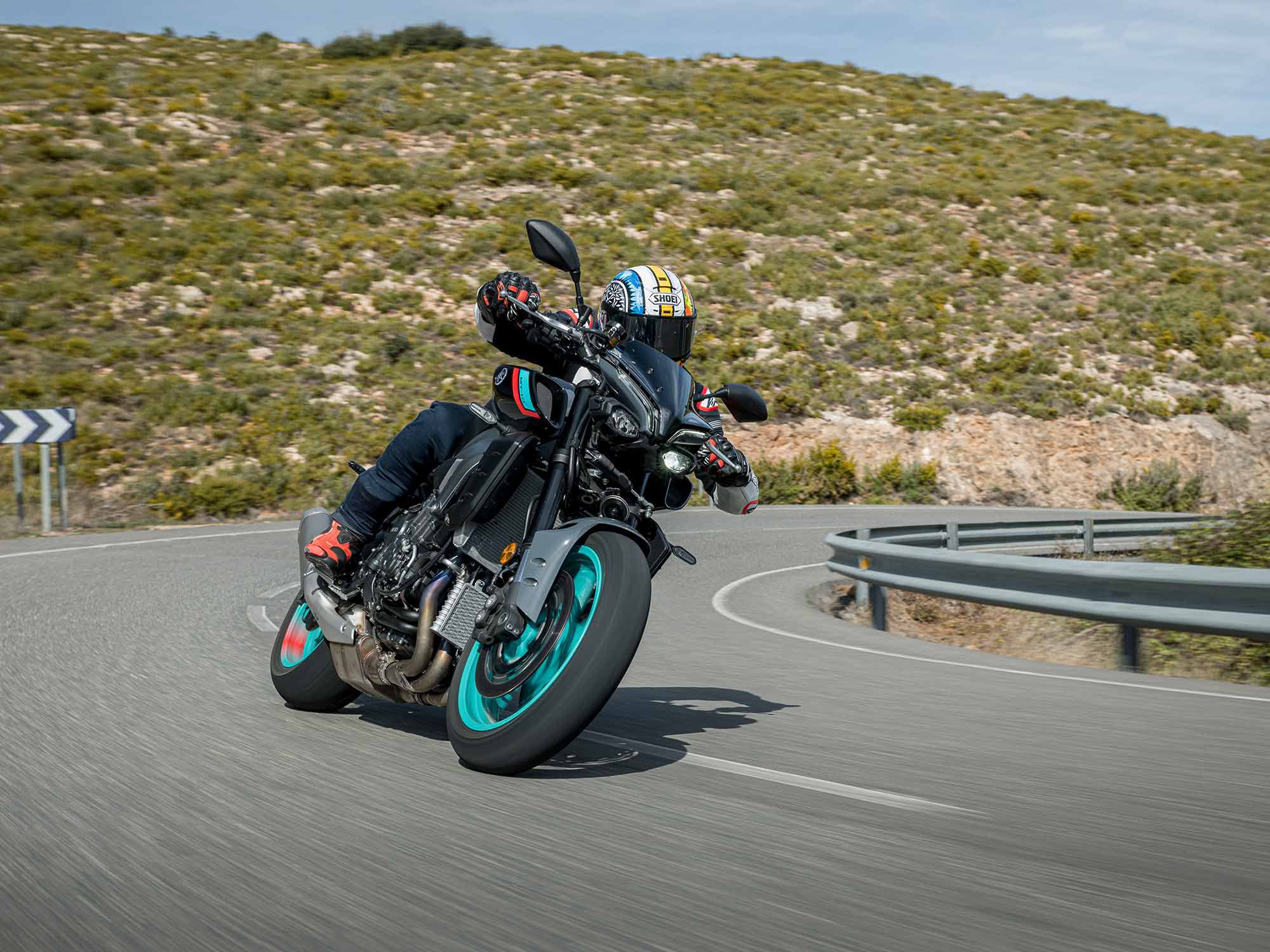
The original MT-10 (read the 2020 Yamaha MT-10 MC Commute Review) has never been a headline-grabber like its 200 hp naked competition, but since its introduction in 2016 Yamaha’s street-focused naked has won many hearts and sales worldwide. Keen pricing, a responsive chassis, and in the crossplane CP4 inline-four, one of the most tractable and exhilarating engines on the planet have kept it bubbling along nicely for six years. But it needed an update (read the 2022 Yamaha MT-10 First Look Preview).
Crucially, Yamaha had to make that incredible engine Euro 5 compliant. During the refit, it added revised rider aids, an increase in power and torque, and bold new styling.
The MT-10′s deliberately industrial semi-finished look has always split opinions. The 2022 streetbike is cleaner-looking and, in the flesh, the new cyan flashes are striking indeed, though I can’t see the haters changing their minds anytime soon.
While the styling may divide the country, the MT’s soundtrack won’t. The CP4 has always had a charismatic bark; Yamaha has added to this overall appeal with a new intake and exhaust system, plus acoustic sound grills in the tank designed to actually direct the intake roar to the rider. Now it sounds so sweetly potent that I couldn’t help a few blips of the all-new fly-by-wire throttle before embarking on our 130-mile test ride, and at every stoplight and junction on the route too.
Commuting through the city of Valencia, the Spanish venue for the MT’s press launch, the MT-10 is more manageable than you might predict. In low-power riding modes, it’s as threatening as a disgruntled turtle. Above 2,000 rpm and 12 mph, the quickshifter is smooth; the only downside at low speeds, especially for 5-foot-7 me, is the seat height, which has increased slightly due to a longer shock length. It’s more of a reach to the ground, up 0.4 inch to 32.9 inches, and the seat also feels a tad firmer.
As we left Valencia behind, I uncovered my first quibble. With the open road beckoning I want to switch out of low-power mode D, but discover I can’t change between modes. I can change the power, then reduce the rider aids, but can’t simply flick from mode D to full-power mode B. At the last set of lights before leaving town, I manage to do so. Now the real MT-10 is unleashed and we’re at the real party, the one where the TV has already exited via a window and the Rolls-Royce is about to join the revelers in the swimming pool.
Forget the new looks, much improved rider aids, and the tweaked chassis. The MT-10′s ace card is the bit Yamaha has left virtually untouched: the engine. Yes, there is a little more torque and power, but it wasn’t needed; 164 hp is more than enough on a naked bike, and the Yamaha delivers torque like a huge, free-revving V-twin.
You don’t need to chase the revs. Instead, dance around in the midrange between 4,000 rpm and 8,000 rpm, feeling invincible. Traction and drive are class-defining; the MT will lift the front at will in the first three gears. Add a distinctive bark and a slick up-and-down quickshifter and you’re not far from a perfect sporty road engine utterly suited to the naked market.
Back to the electronics for a moment. These are all new, with a six-axis IMU meaning the plethora of rider aids are all lean sensitive and on a par with the newer competition. There’s a noticeable step between riding modes; for me, mode B is the optimum setting. Mode A isn’t as radical as it once was, but is still a little sharp for the road. Modes C and D are more suited for town or slippery conditions, especially for inexperienced riders.
The electronic rider aids are much improved. While the introduction of a six-axis IMU has made the electronics lean sensitive, they don’t diminish the fun. For example, you can switch off the lift control (wheelie control) but leave the slide and traction control active, meaning that in slippery conditions you can still wheelie but retain the safety net of slide and traction control. Alternatively, you can just reduce the lift control to its minimum setting, which still allows the front wheel to lift but does so depending on the speed of the lift, gear, road speed, and throttle position… It’s an impressive system.
The rider aids are also slicker than before, as is the reintroduction of power after the initial intervention. With the rider aids reduced it was still possible to slide the rear a fraction on the dusty Spanish roads. Feeling the intervention was a welcome addition and by no means hindered the MT-10′s legendary fun approach to life.
Cornering ABS is now standard, and Yamaha has raised its game and added a Brembo master cylinder to the front brake setup. While braided lines will appear on the SP model to be released later this year, they still do not come as standard on the MT-10, and the four-piston Yamaha calipers remain the same, so no Brembo items here. Stopping power has increased, and the brakes are indeed sharper, but toward the limit they feel marginally wooden and lack the one-to-one connection you get with the very latest Brembos on to the high-end bikes in this class. To be fair, the absence of Italian stoppers is reflected in the Yam’s attractive price.
Yamaha has raised the rear ride height (by 0.1 inch) and compensated with minor changes to the front shim stack. For 90 percent of the ride there are no issues, and the new Bridgestone Battlax S22 rubber is a step up from the old. The ride is excellent on the freeway, and the MT-10 soaks up imperfections around town with relative ease.
In the mountains, around countless twists and turns, I was happy to lay the MT-10 on its side on unknown roads. This is one of those bikes that inspires confidence and always feels easy to ride at pace. It may be a 467-pound bike, but it turns into corners with flow and balance, and the rider aids and mechanical grip allow you to dial in that incredible torque earlier and earlier.
When flicking through turns or changing direction at high speed, the MT-10 is not as lively or responsive as, say, BMW’s 427-pound S 1000 R. But that extra timber does give reassuring feel and stability. Interestingly, the wheelbase is now a fraction longer due to the smaller rear sprocket (introduced to reduce the lively feel of the engine, and give a lower rpm when touring), but it’s still shorter than the MT-09.
It is in that last 20 percent of the fork stroke, the bit you use when you’re really pushing, that I would want a little more front end feedback. And possibly a slightly softer front end, which usually translates more feedback to the rider. I suspect Yamaha has raised the rear end a fraction to quicken the steering but was then forced to increase the front shim stack to compensate for the weight transfer—some lighter riders may want a softer fork setup.
Verdict
Yamaha has focused on the MT-10′s weak points and made significant improvements. The rider aids are a significant step up from the old bike and, crucially, haven’t diminished the fun. The brakes are stronger and now have lean-sensitive ABS in support, while the CP4 crossplane engine is a claimed 15 percent more fuel efficient, sounds even better, and has even more accessible torque. The MT-10 scores very highly because it simply makes riders smile. It’s always fun to ride.
I even love the new color, and the MT possesses a quality feel, its relatively small dash aside. Suspension can be tailored to match the ride, and there’s room for a little more feel, but it really is hard to fault. There is little doubt the new MT-10 should continue to be a success.
2022 Yamaha MT-10 Technical Specifications and Price
| PRICE | $13,999 |
| ENGINE | 998cc, DOHC, liquid-cooled, inline 4-cylinder; 16 valves |
| BORE x STROKE | 79 x 50.9mm |
| COMPRESSION RATIO | 12.0:1 |
| FUEL DELIVERY | Ride-by-wire fuel injection |
| CLUTCH | Wet, multiplate slipper clutch |
| TRANSMISSION/FINAL DRIVE | 6-speed/chain |
| FRAME | Aluminum Deltabox |
| FRONT SUSPENSION | 43mm KYB, fully adjustable; 4.7 in. travel |
| REAR SUSPENSION | Single KYB, fully adjustable; 4.7 in. travel |
| FRONT BRAKES | 4-piston calipers, dual 320mm discs w/ ABS |
| REAR BRAKE | 2-piston Nissin caliper, 220mm disc w/ ABS |
| WHEELS, FRONT/REAR | Alloy 5 spoke; 17 x 3.5 in. / 17 x 6.0 in. |
| TIRES, FRONT/REAR | Bridgestone Battlax Hypersport S22; 120/70-17 / 190/55-17 |
| RAKE/TRAIL | 24.0°/4.0 in. |
| WHEELBASE | 55.3 in. |
| SEAT HEIGHT | 32.9 in. |
| FUEL CAPACITY | 4.5 gal. |
| CURB WEIGHT | 467 lb. |
| WARRANTY | 12 months, limited |
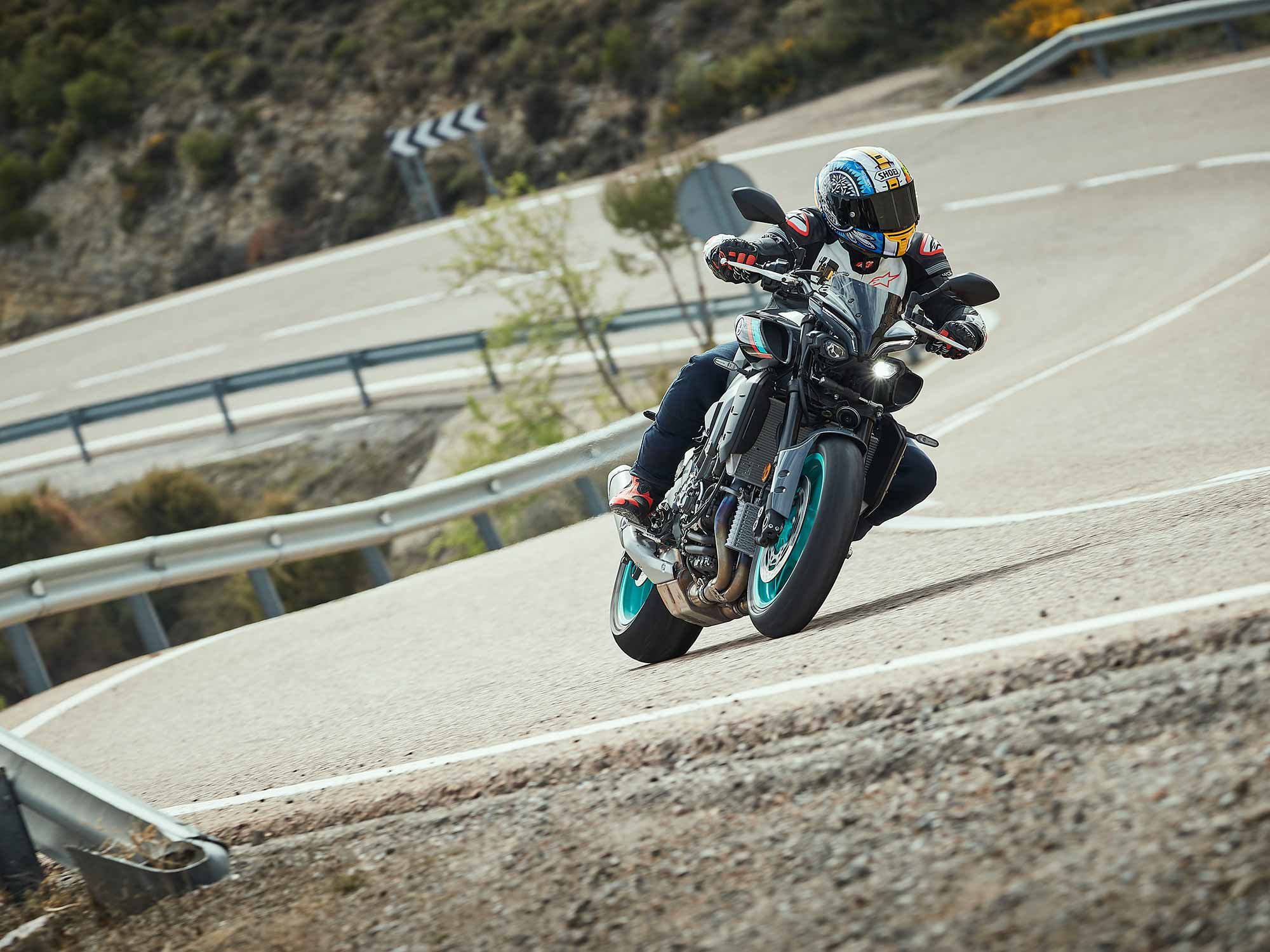
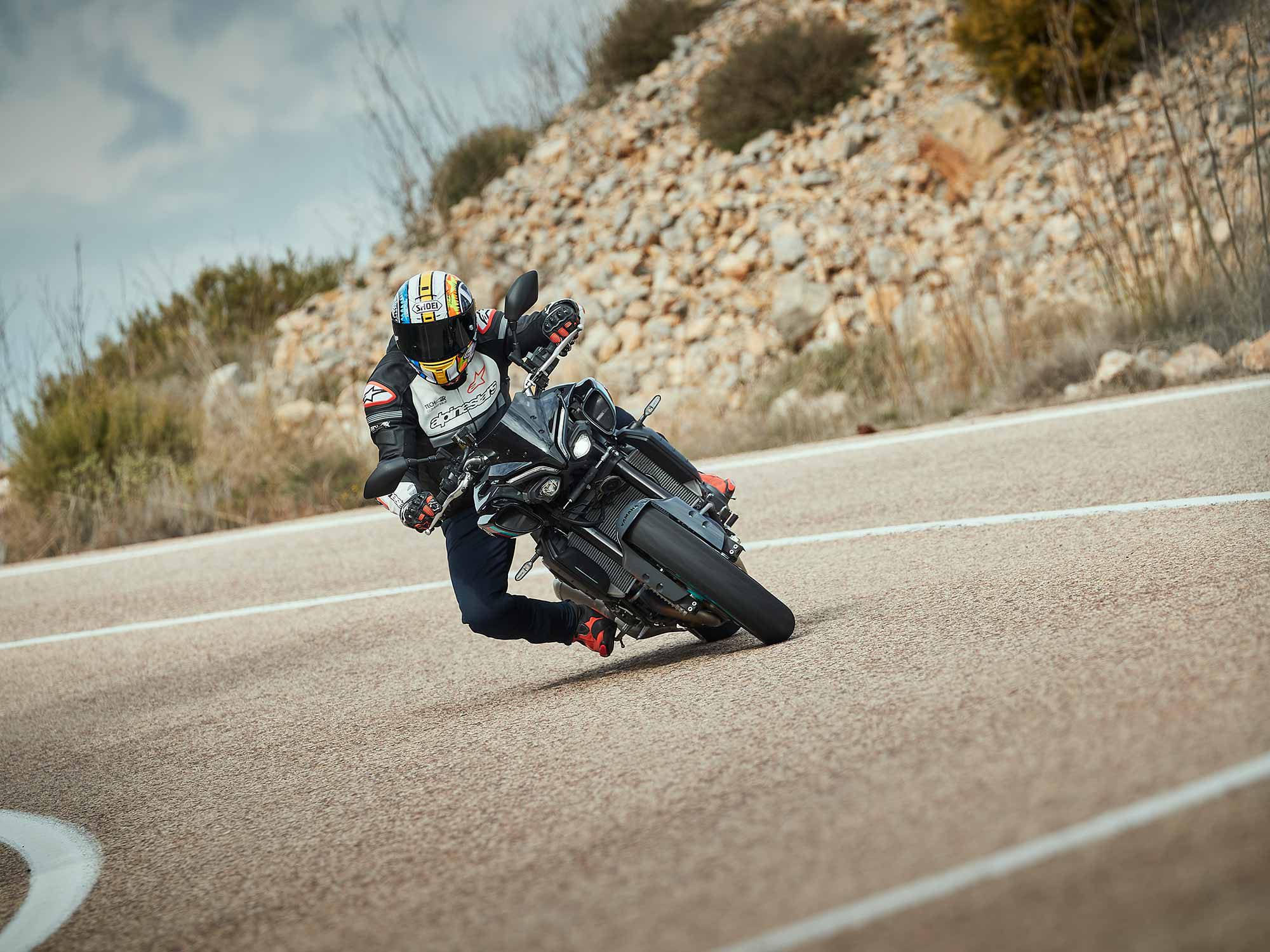
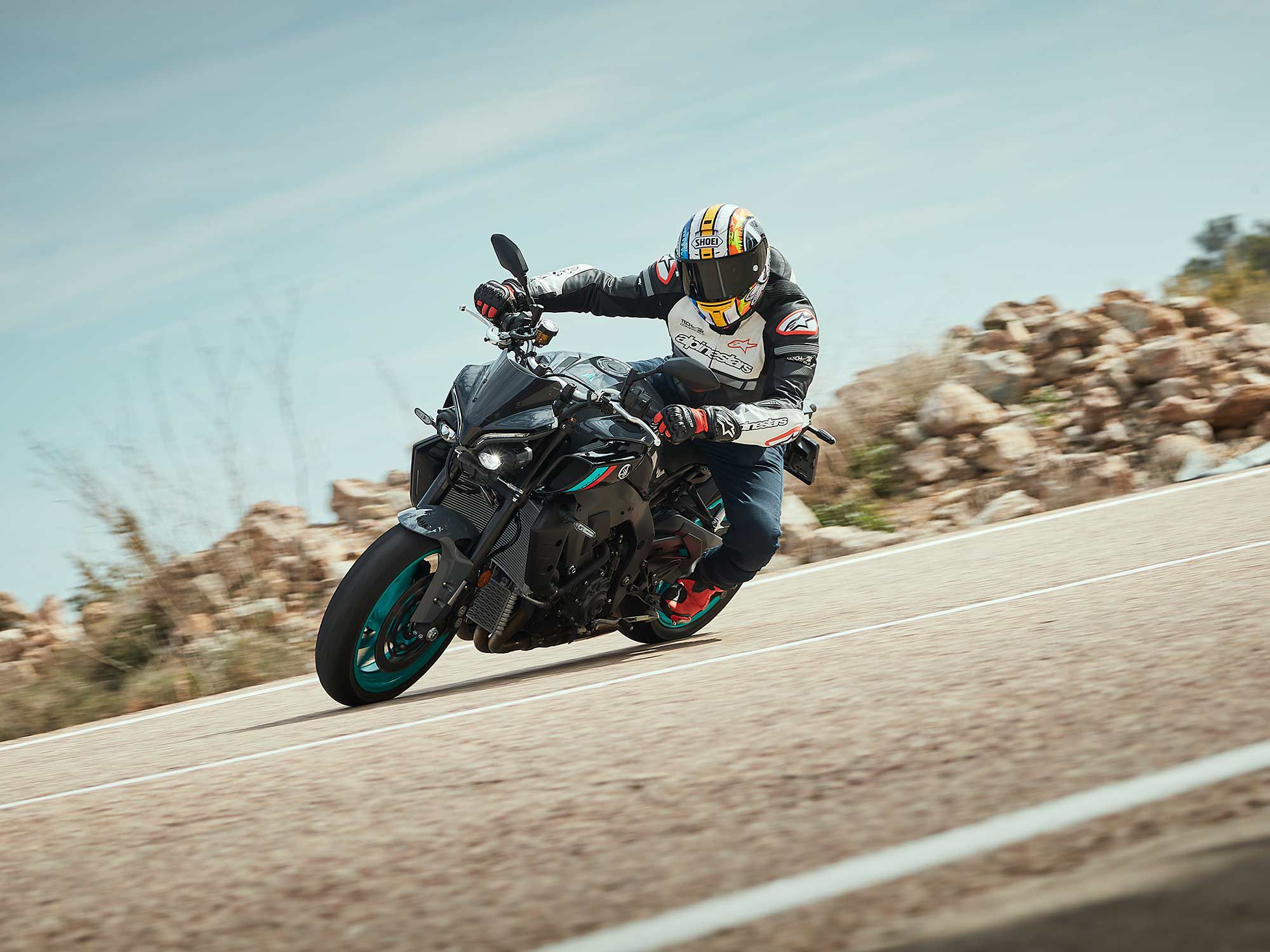
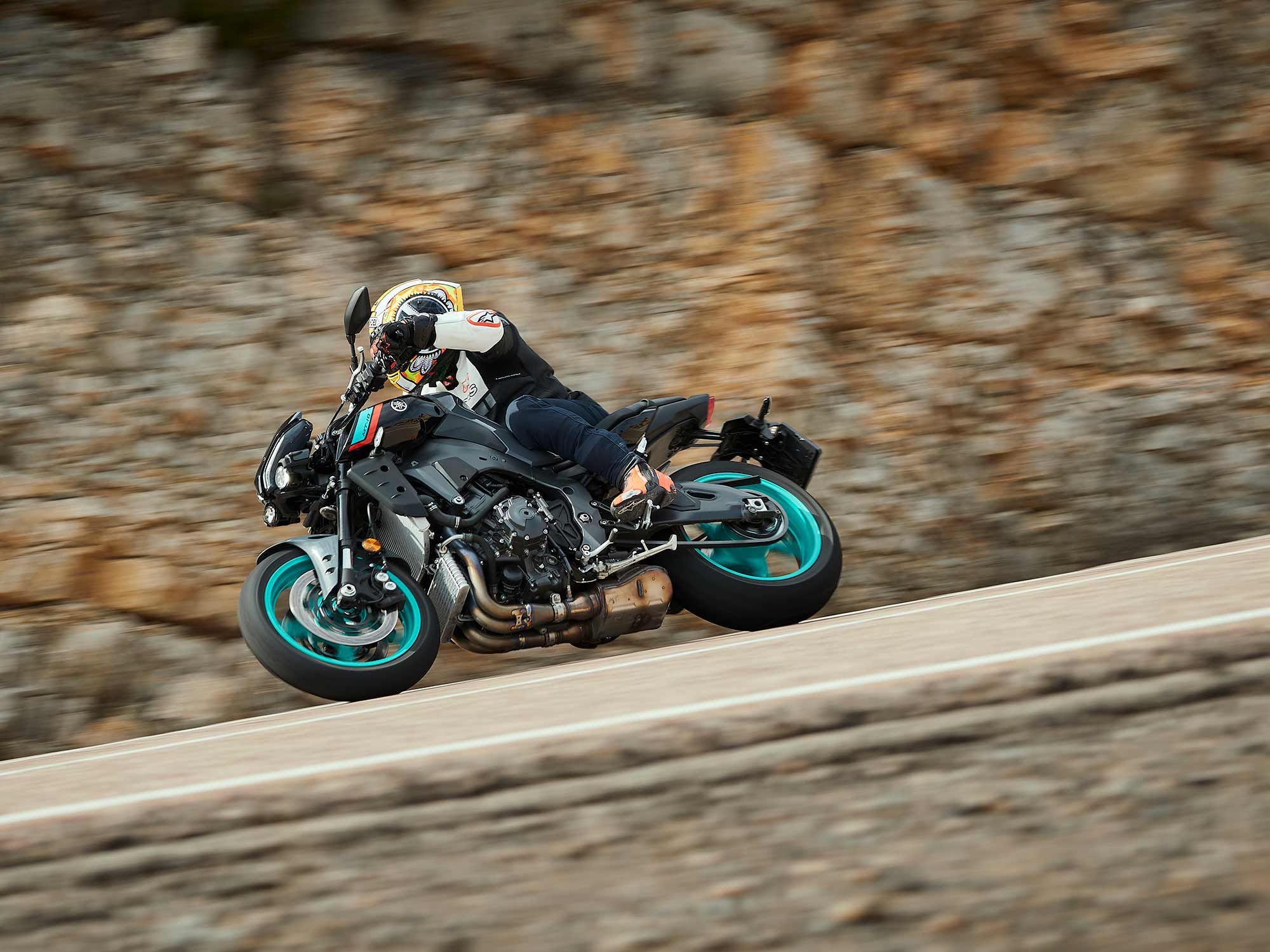
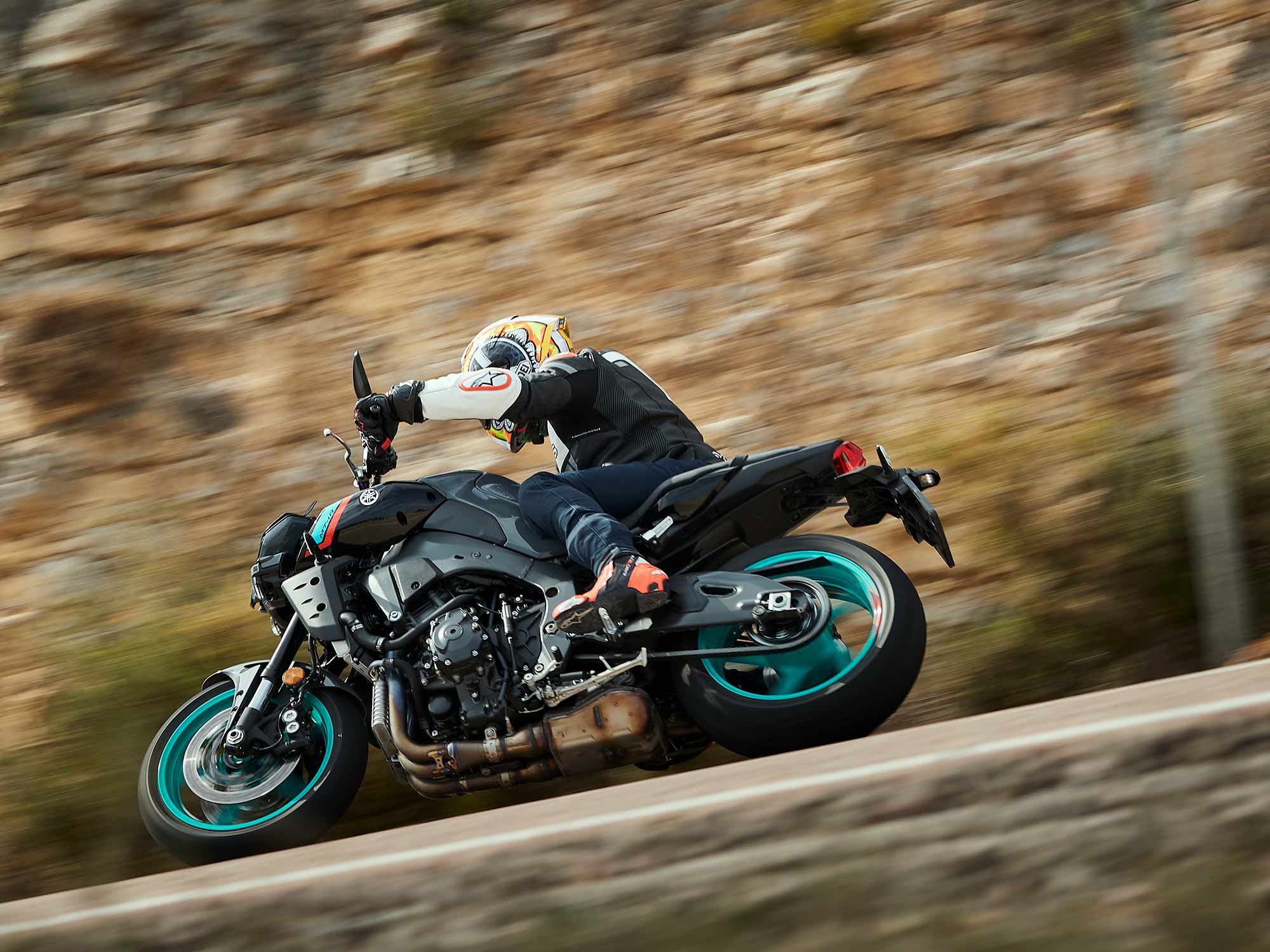
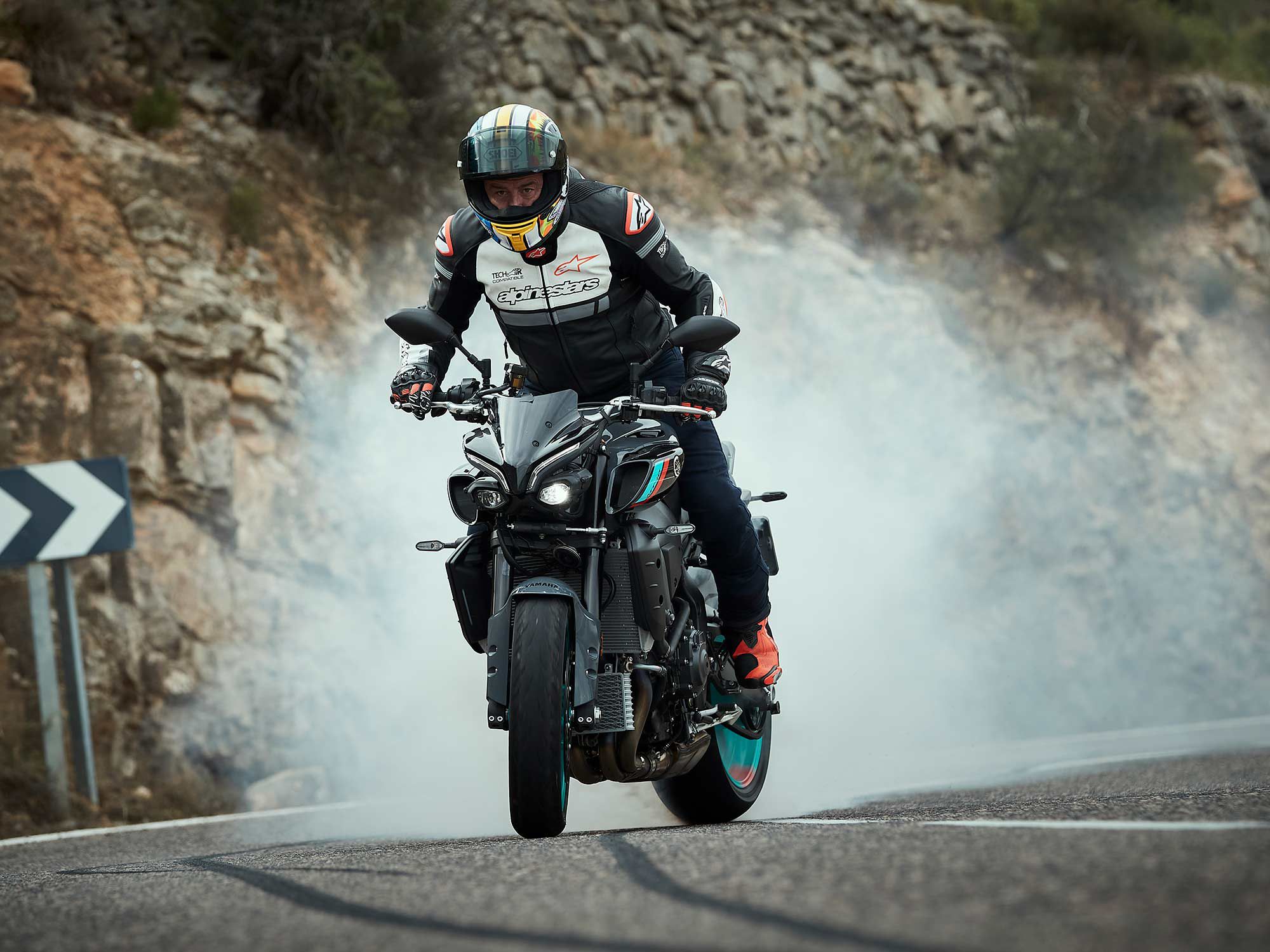
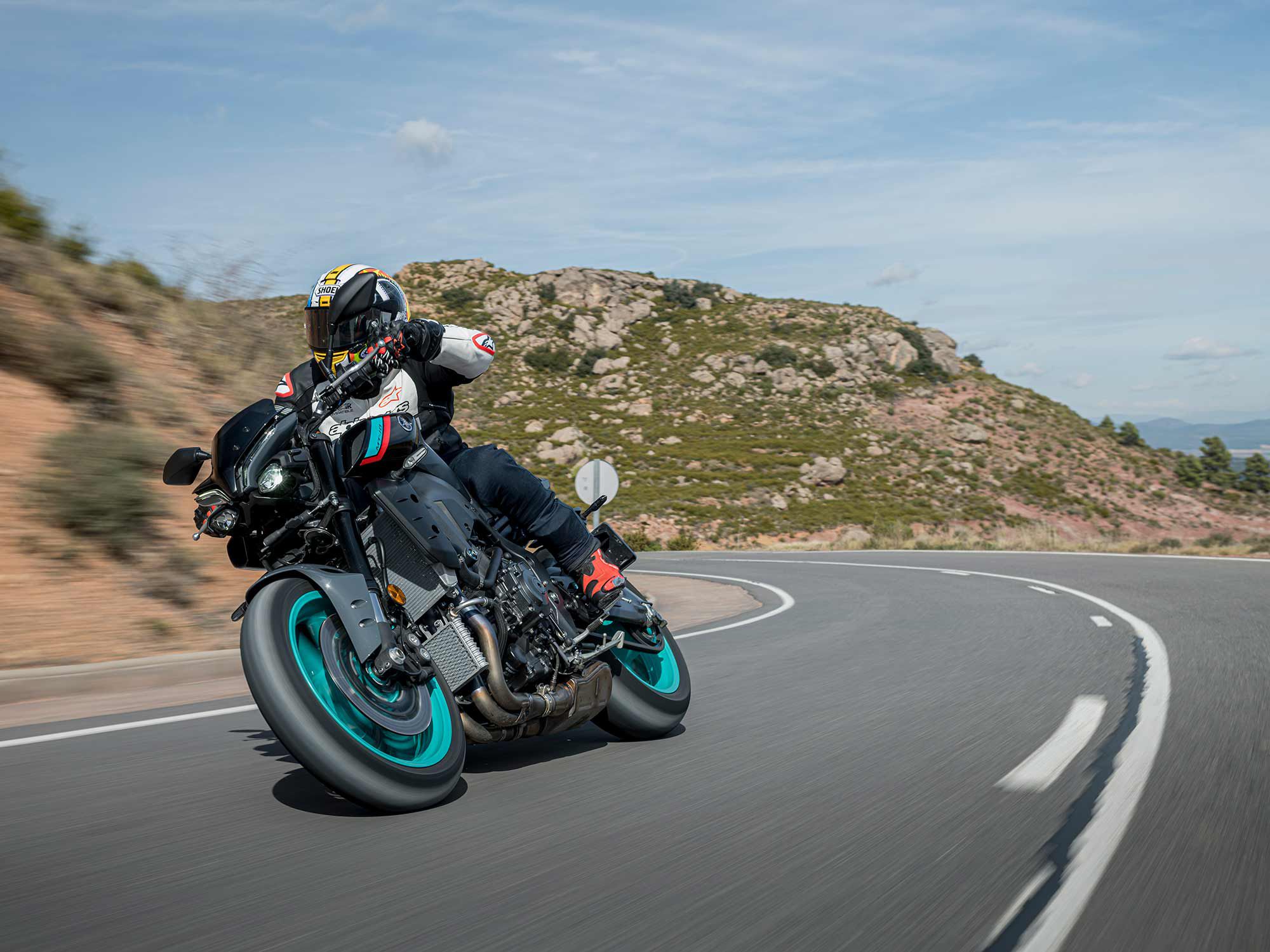
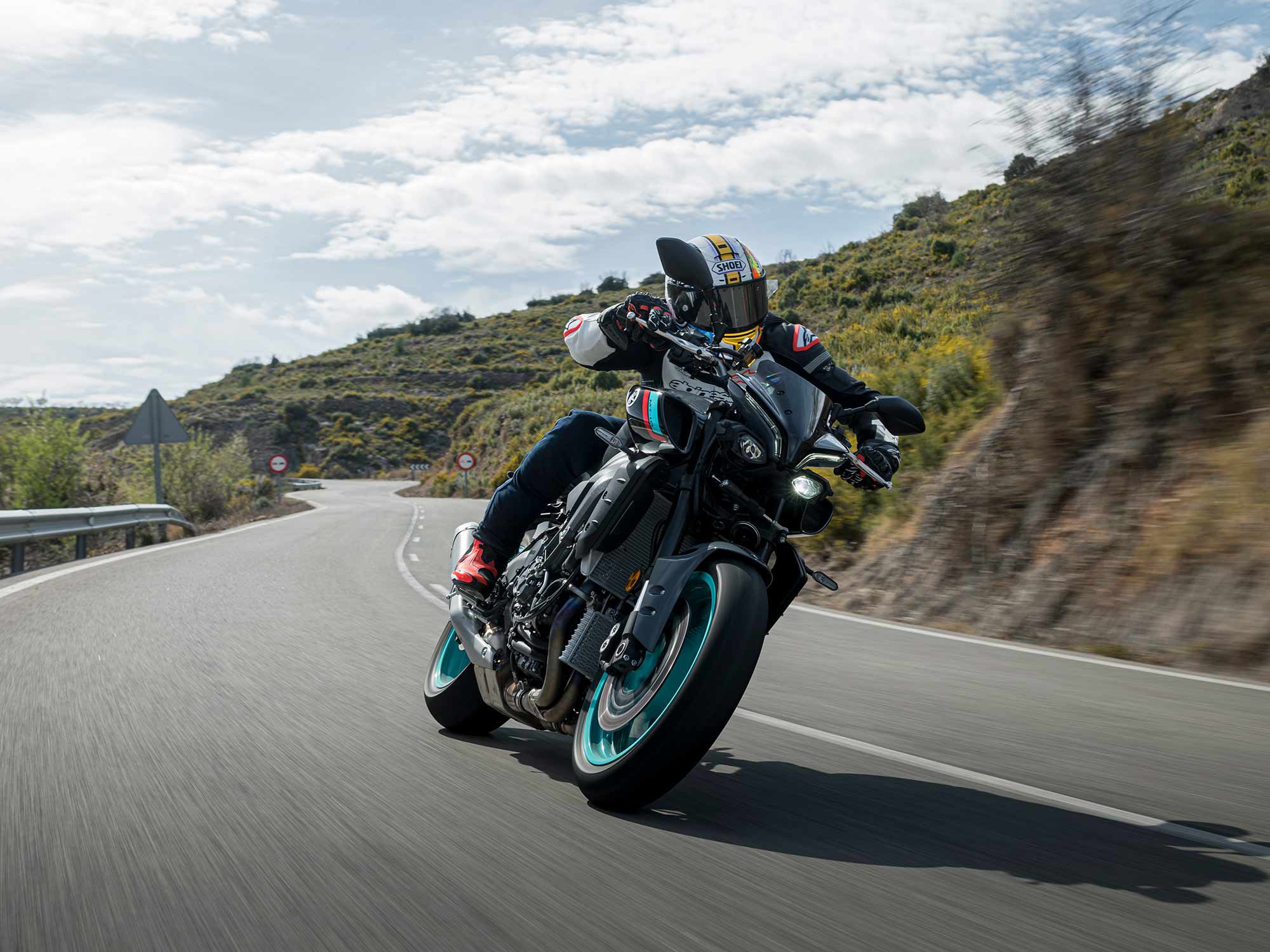
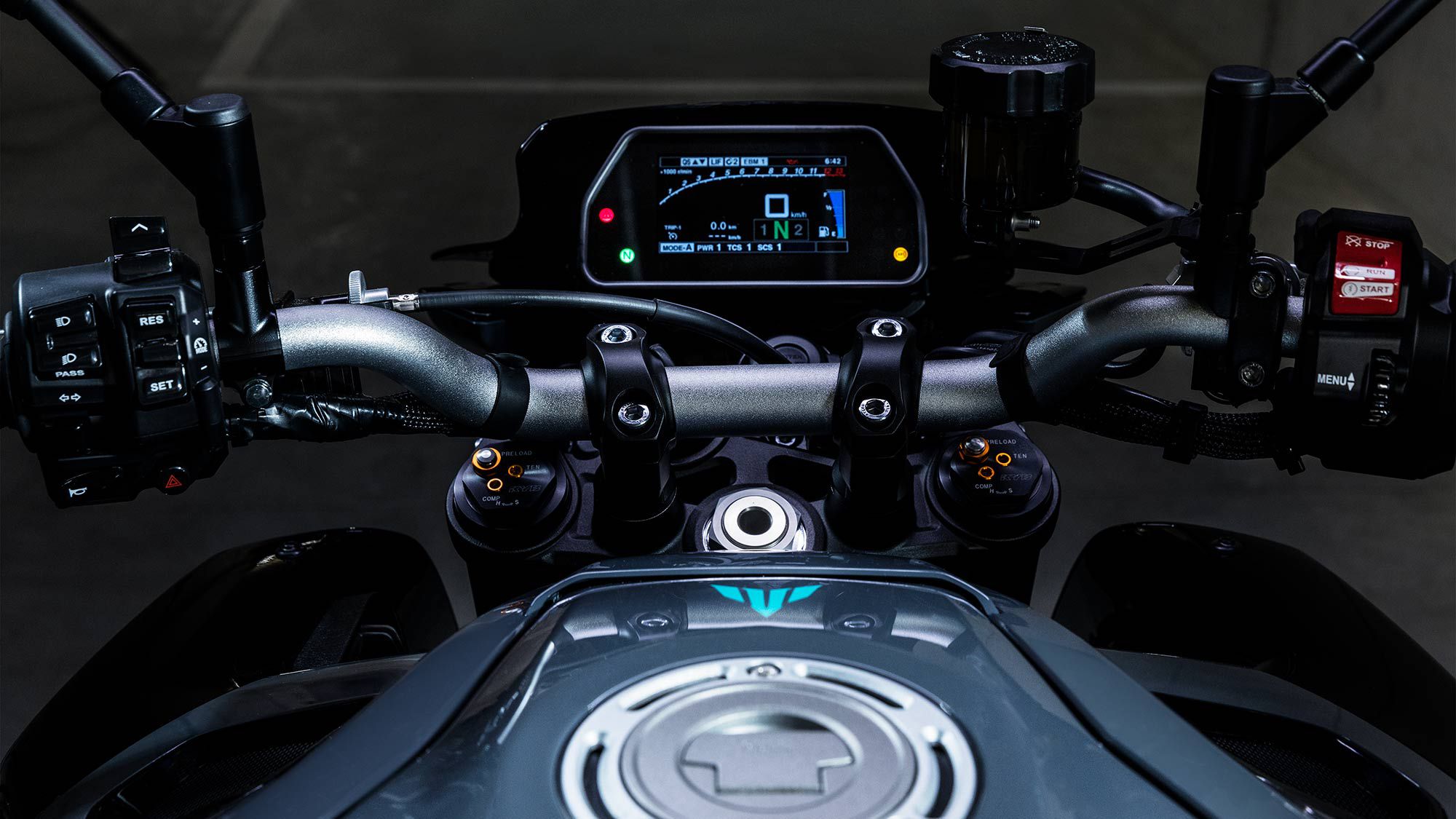
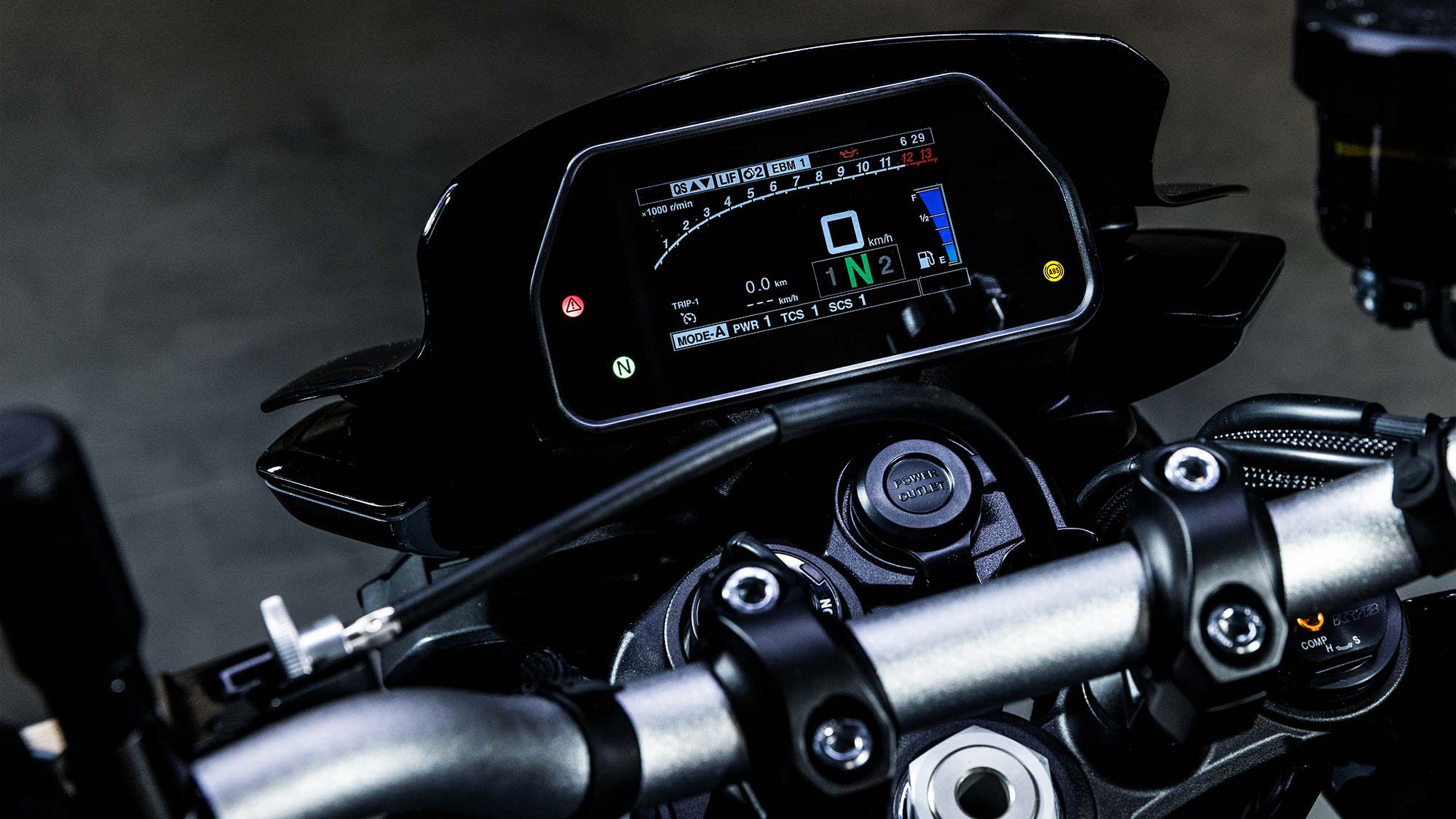
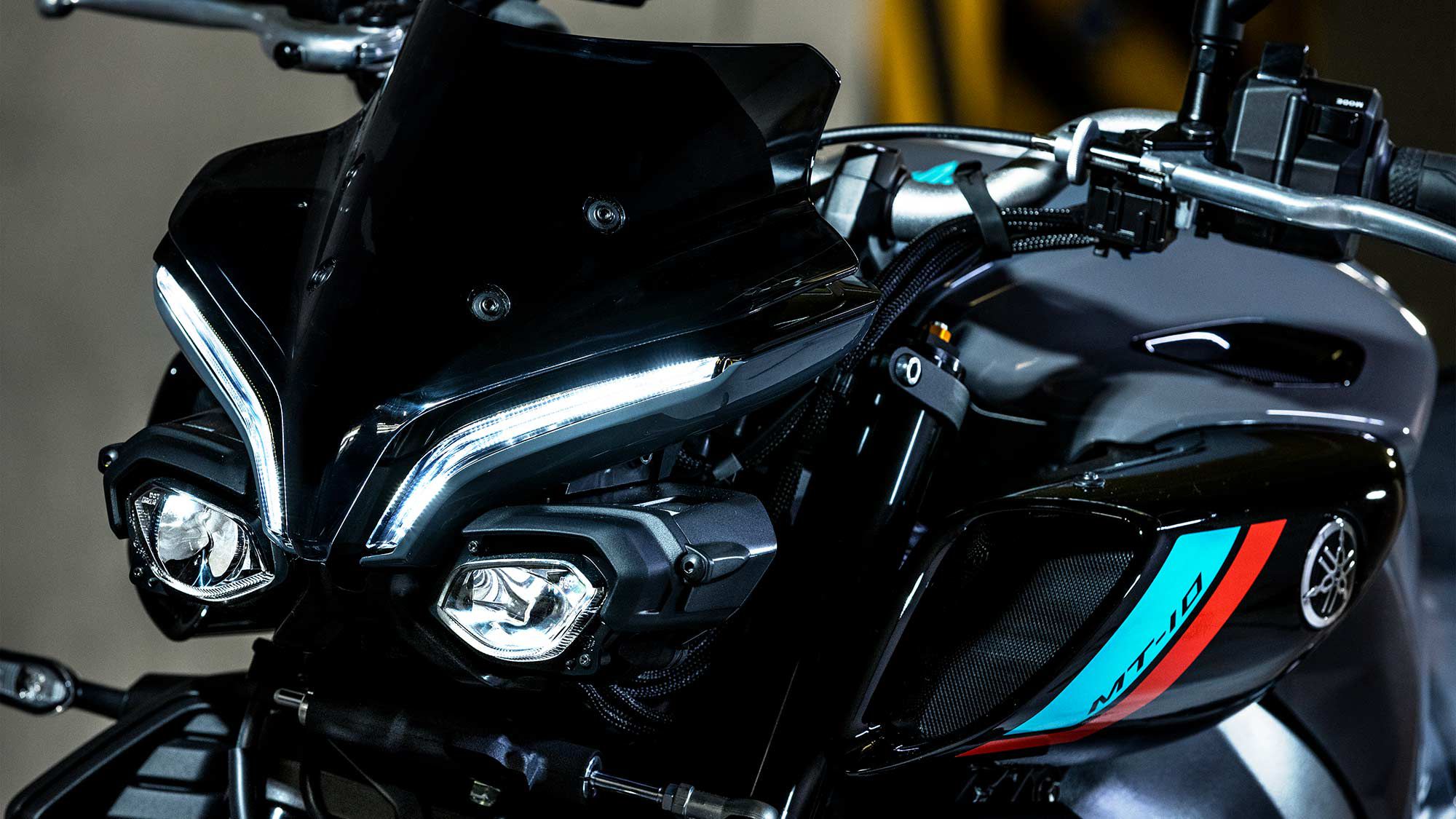
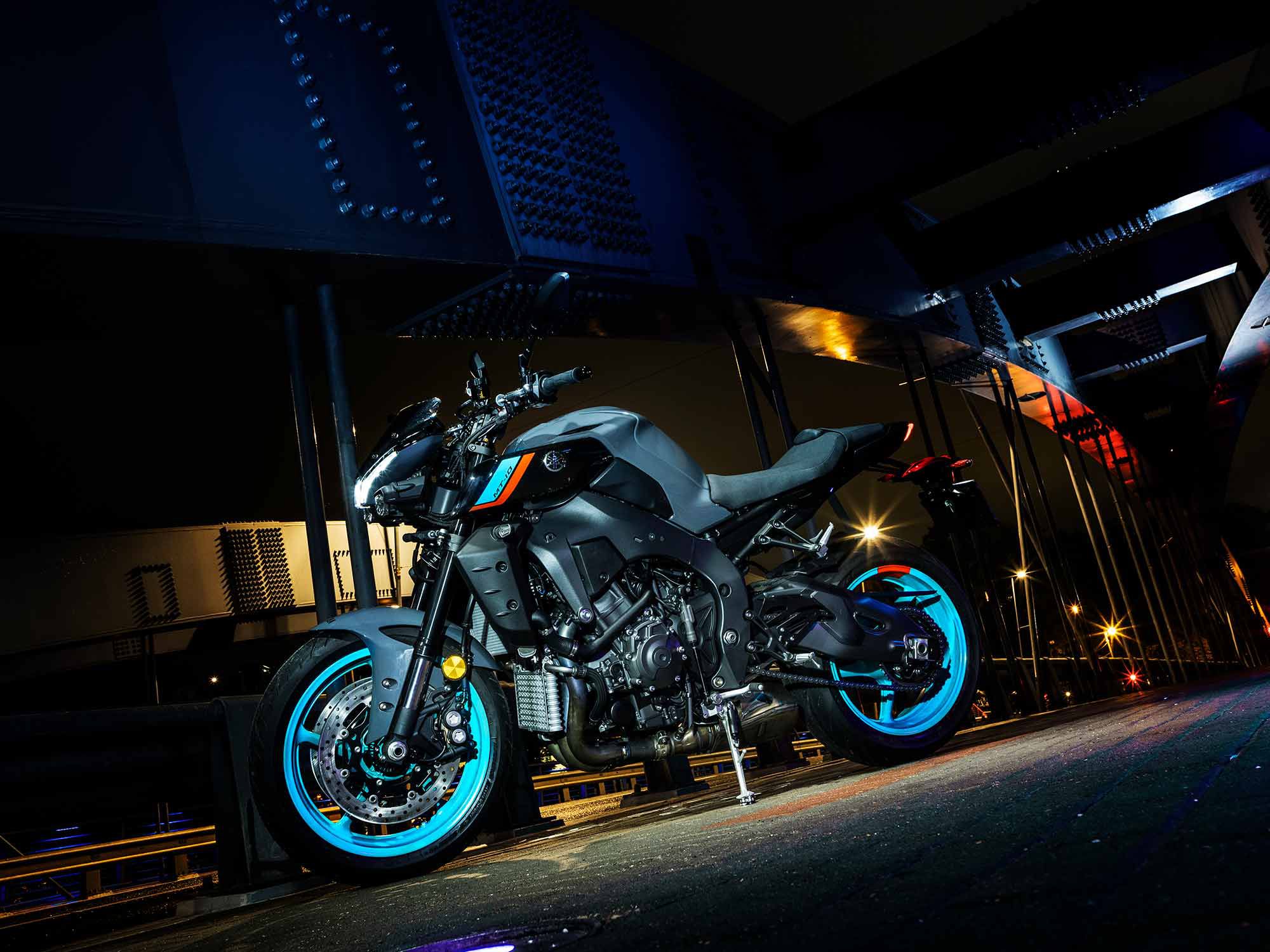
Source: MotorCyclistOnline.com
